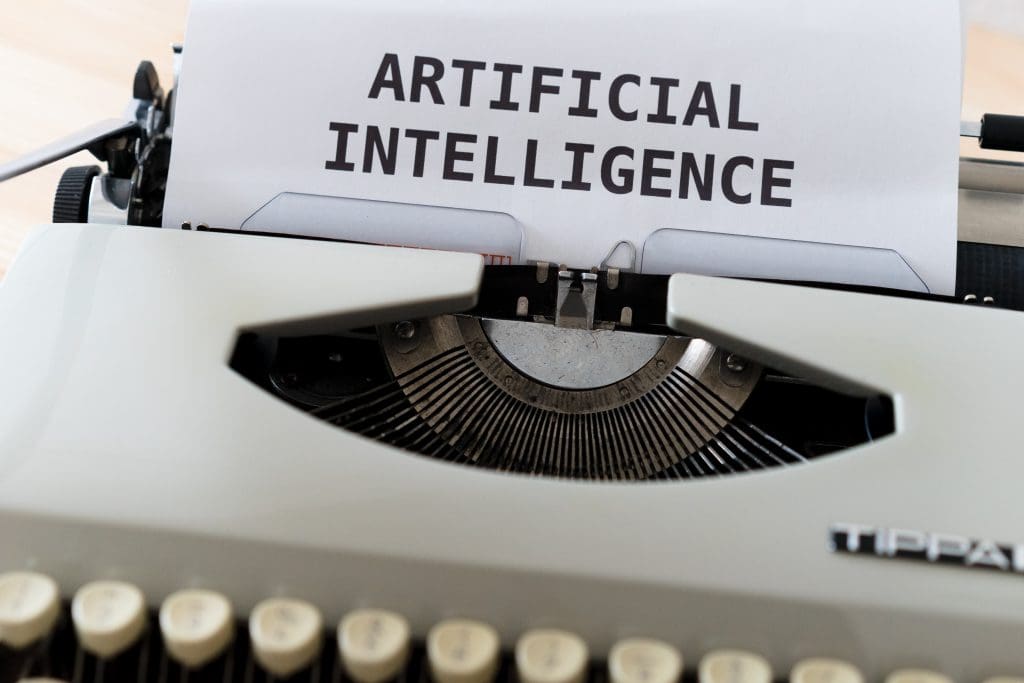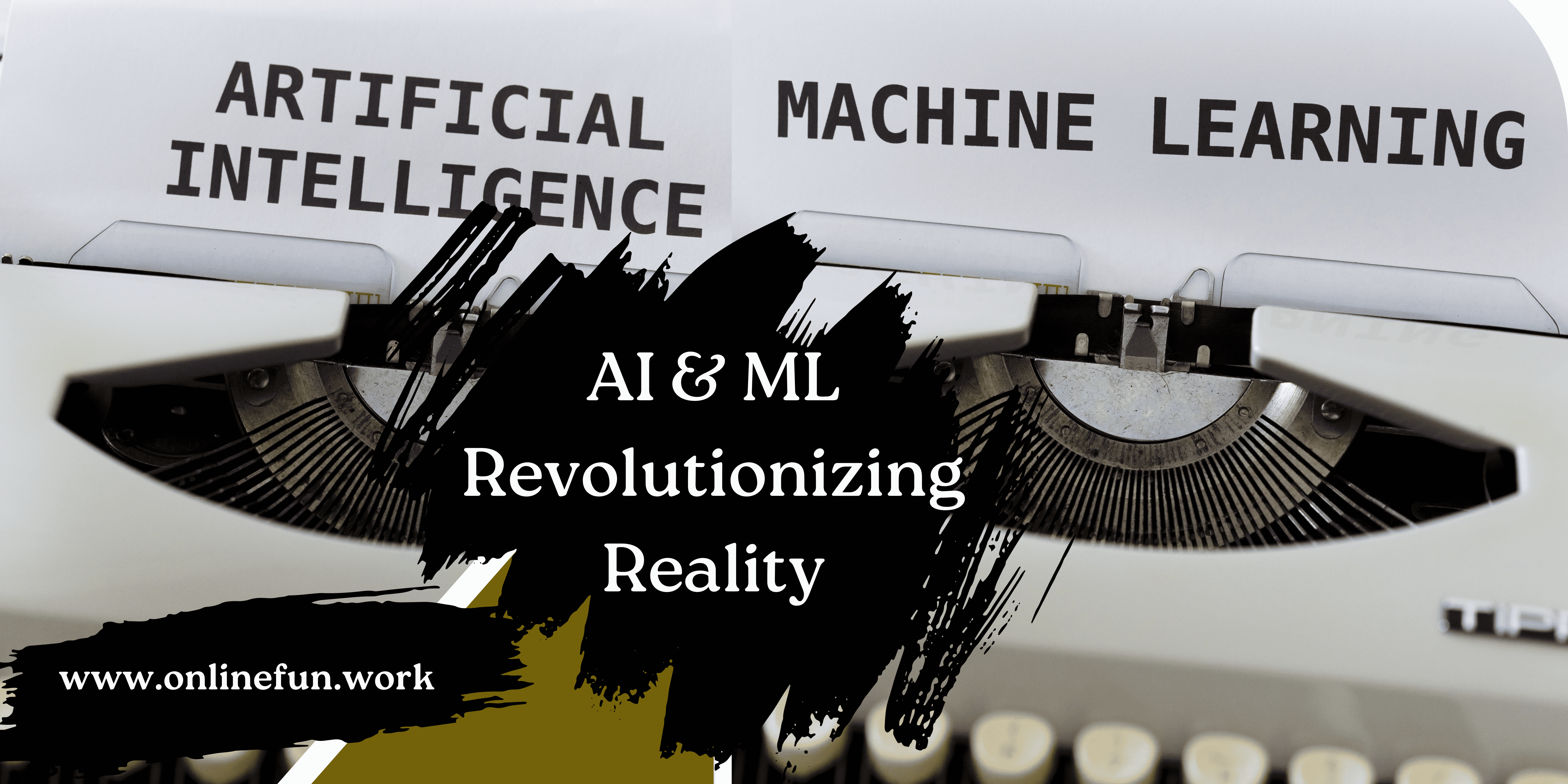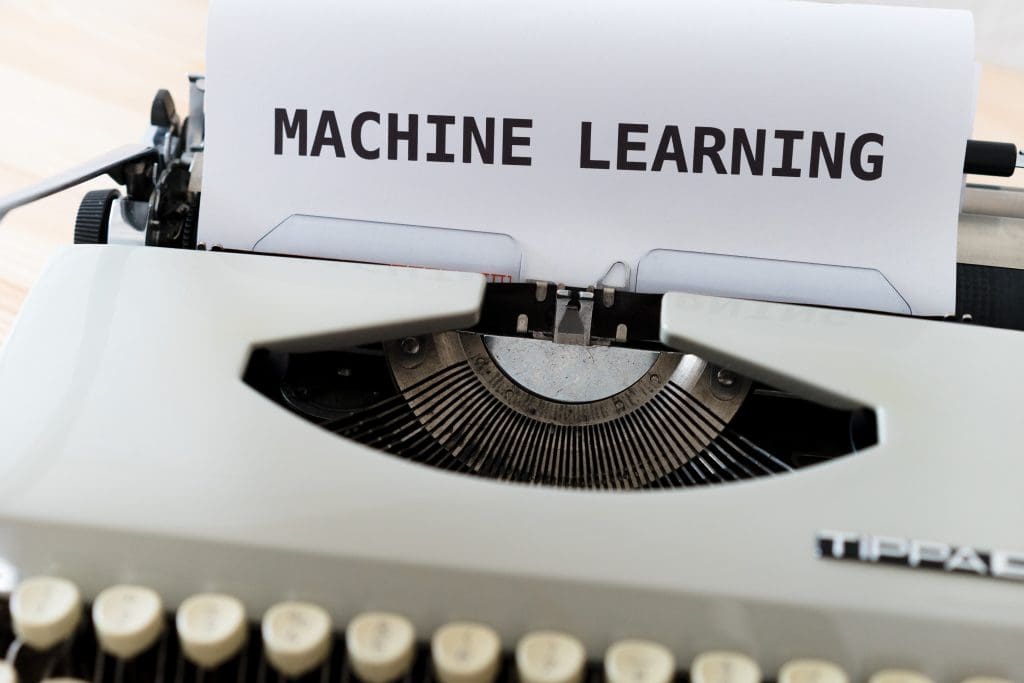AI & ML Revolutionizing Reality
Artificial Intelligence (AI) and Machine Learning (ML) have become the defining technological advancements of our era. These innovations have seamlessly woven themselves into our daily lives, whether in the form of personal voice assistants on smartphones or in the intricate diagnosis of complex medical conditions. In this article, we embark on “AI & Ml Revolutionizing Reality”. An exploration of the intricacies of AI and ML, unraveling their diverse applications and far-reaching societal consequences.
Let’s explore “AI & ML Revolutionizing Reality.”

Unveiling Artificial Intelligence (AI)
AI, often referred to as the pinnacle of computer science, is dedicated to forging systems and machines with the capability to undertake tasks that traditionally necessitate human intellect. These tasks encompass the comprehension of natural language, pattern recognition, and autonomous decision-making. The roots of AI date back to the 1950s, and since its inception, it has undergone a remarkable evolution.
AI systems, powered by algorithms and data, have the remarkable aptitude to forecast outcomes and enact actions. Their adaptive learning capabilities enable them to enhance their performance over time. From self-driving automobiles to the recommendation systems that dictate our viewing preferences on streaming platforms, AI has become an indomitable presence in our lives.
Demystifying Machine Learning (ML)
Machine Learning, often a subsidiary of AI, is the art of enabling machines to learn from data without explicit programming. ML algorithms equip systems to identify patterns and arrive at decisions rooted in data. It’s the underlying technology that tailors product suggestions on e-commerce websites and filters out unwanted email content.
ML bifurcates into three distinct types: supervised learning, unsupervised learning, and reinforcement learning, each bringing unique advantages and applications to the forefront.
The Vast Spectrum of AI and ML Applications
AI and ML have found their calling in a multitude of industries. In the tech world, AI breathes life into chatbots and virtual assistants like Siri and Alexa, making human-computer interactions more intuitive. ML algorithms transform our online shopping experiences by suggesting products based on our browsing history, and they also play a pivotal role in fraud detection within the financial sector.
In the healthcare realm, AI’s prowess aids in the prompt and accurate diagnosis of diseases, while ML takes the reins in scrutinizing medical data for trends and patterns that elude the human eye. Furthermore, AI-driven robots and drones are ushering in a new era of automation, performing tasks that are hazardous or labor-intensive in various industries. Be it through automating manufacturing processes or precision stock trading in the finance sector, AI and ML are at the forefront of innovation, revolutionizing practices across the board.
The Societal Impact: Balancing Marvels and Concerns
The profound impact of AI and ML on society is undeniable. These technologies usher in convenience, efficiency, and novel possibilities. Yet, they also unfurl concerns regarding the displacement of jobs due to automation, privacy infringements, and biases inherent in algorithms. The ethical dimension of AI and ML continues to be a subject of ongoing discourse, especially as their ubiquity increases.
The development of autonomous vehicles serves as an exemplary case in point. While autonomous vehicles hold the promise of reducing accidents and traffic congestion, they simultaneously raise pressing questions about safety and liability. Balancing these significant benefits and potential risks poses a formidable challenge that necessitates careful consideration.
AI and ML: Pioneering Data Analysis
In the age of colossal data sets, AI and ML emerge as pivotal players in the domain of data analysis. With the capacity to sift through vast troves of data and extract invaluable insights, they find application across diverse fields, spanning marketing, finance, and scientific research. The adoption of AI and ML empowers organizations to make data-driven decisions and gain a competitive edge in an increasingly data-centric landscape.
AI and ML in Healthcare: Revolutionizing Diagnosis and Treatment
The union of AI and ML with the healthcare sector is nothing short of revolutionary. This amalgamation of cutting-edge technology and medical science redefines the diagnosis and treatment of diseases, offering unparalleled precision and personalization.
Precision Diagnosis Redefined
AI and ML’s most remarkable contribution to healthcare is their capacity to facilitate early and accurate disease diagnosis. Traditional diagnostic methods heavily reliant on human expertise may occasionally overlook subtle indicators. AI-driven diagnostic tools, in contrast, exhibit an unmatched ability to analyze extensive datasets, medical imagery, and patient histories with lightning speed and unparalleled precision.
For instance, AI algorithms excel at scrutinizing medical images such as X-rays, MRIs, and CT scans, identifying anomalies and potential disease markers that might elude human radiologists. This expedited diagnostic process not only enhances accuracy but also significantly mitigates the risks of misdiagnosis, ultimately resulting in improved patient outcomes.
Predicting and Preventing Outbreaks
AI and ML have emerged as indispensable tools in the field of epidemiology. These technologies harness the power of big data, scanning through immense healthcare datasets to unearth hidden patterns that might signal the outbreak of diseases. By monitoring social media trends, hospital admission rates, and geographical data, AI systems can predict outbreaks, such as influenza or COVID-19, before they spiral out of control.
This foresight empowers healthcare authorities to take proactive measures, such as launching vaccination campaigns or implementing public health interventions to curb the spread of diseases. In essence, AI and ML play a pivotal role in disease prevention, saving countless lives in the process.
Tailoring Treatment to Individual Needs
In the past, medical treatment plans often adhered to a one-size-fits-all approach, based on generalized guidelines and statistical averages. AI and ML, however, are heralding a new era by facilitating the personalization of treatment plans. These technologies take into account an individual’s unique genetic makeup, medical history, and lifestyle to craft tailored treatments that cater to their specific requirements.
This level of customization has a profound impact on patient care. For example, in the realm of oncology, AI can scrutinize a patient’s genetic profile to pinpoint the most effective cancer treatment with minimal side effects. In the realm of mental health, AI-driven algorithms can create individualized therapy plans for those grappling with conditions such as depression or anxiety.
The Boundless Potential
The potential of AI and ML in healthcare knows no bounds. As these technologies continue to evolve, one can anticipate even more innovative applications. Picture a future where wearable devices, infused with AI, can continuously monitor your health, detect anomalies, and notify both you and your healthcare provider about potential health issues before they escalate. Imagine AI-driven robots functioning seamlessly in surgical procedures, ensuring precision and minimizing human errors.
The synergy between AI, ML, and healthcare has the potential to not only save lives but also dramatically enhance the quality of healthcare on a global scale. It stands as a testament to the remarkable strides made in merging technology and medicine for the greater good.
Ethical Contemplations
The ascent of AI and ML into the realm of healthcare also ushers in ethical concerns. Algorithms may inadvertently perpetuate biases ingrained in their training data, giving rise to issues of discrimination. Upholding transparency and accountability in AI decision-making processes is of paramount importance. Striking the equilibrium between innovation and ethical usage represents an ongoing challenge.
Pondering the Future of AI and ML
As AI and ML continue to advance, their potential remains limitless. A landscape of increased automation, enhanced decision-making, and the genesis of novel industries awaits us. AI and ML will spearhead the Fourth Industrial Revolution, fundamentally reshaping the way we live and work.
ALSO READ: Data mining
Conclusion
Artificial Intelligence and Machine Learning have undeniably redefined our world. They have assumed pivotal roles in various sectors, from healthcare to finance. Nonetheless, their integration into society comes hand in hand with multifaceted challenges. Addressing ethical concerns and fostering responsible and inclusive utilization of these technologies is a vital endeavor.
In a world characterized by data-driven decisions and automation, AI and ML will continue to be instrumental in shaping our future. The possibilities are endless, and our responsibility lies in harnessing these technologies for the greater good.
Frequently Asked Questions
How does AI differ from ML?
AI encompasses the broader concept of creating intelligent machines, while ML constitutes a subset of AI focused on machine learning from data to enhance performance.
What are some prominent uses of AI and ML in healthcare?
AI and ML are instrumental in early disease diagnosis, predicting and preventing disease outbreaks, and personalizing treatment plans.
What ethical concerns surround AI and ML?
Ethical considerations encompass biases within algorithms, privacy issues, and potential job displacement due to automation.
Which industries benefit the most from AI and ML?
Industries such as technology, healthcare, finance, and marketing experience substantial benefits from AI and ML.
What does the future hold for AI and ML?
The future promises further automation, enhanced decision-making, and the emergence of new industries, placing AI and ML at the forefront of the Fourth Industrial Revolution.





